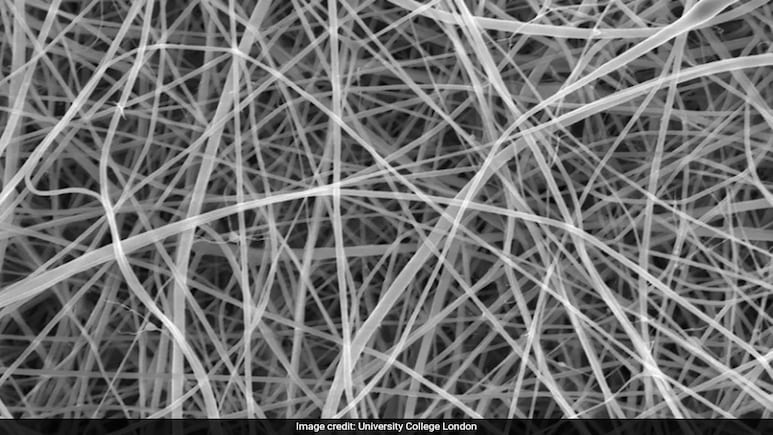Scientists Create World's Thinnest Spaghetti: A Breakthrough with Nanofibres for Medical Use

A team of UK chemists at the University College London (UCL) has achieved a remarkable feat in creating the world's thinnest spaghetti, shattering previous records by approximately a thousand times. The new pasta, which is 200 times thinner than a human hair and narrower than some wavelengths of light, was created using a technique called electrospinning to produce nanofibres from a flour mixture.
The researchers used scanning electron microscopy to capture images of the spaghetti strands, as they were too thin to be seen with visible light cameras or microscopes. The team's goal in creating this ultra-thin pasta was not for culinary purposes but rather for their potential medical applications.
According to Dr. Adam Clancy, co-author of the study, "To make spaghetti, you push a mixture of water and flour through metal holes. In our study, we did the same except we pulled our flour mixture through with an electrical charge. It's literally spaghetti but much smaller." The researchers employed a flour mixture with formic acid instead of water, which helped to break down the starch into extremely fine nanofibres.
The potential applications for these nanofibres are vast and varied. They can be used as a cheap, eco-friendly alternative to starch in biodegradable products such as next-generation bandaging or carbonised supercapacitor electrodes. Additionally, their hydrophilic properties make them suitable for use in wound dressings, which could aid in tissue regeneration.
As Dr. Gareth Williams, co-author of the study, explained, "Nanofibers show potential for use in wound dressings as they are very porous. In addition, nanofibers are being explored for use as a scaffold to regrow tissue, as they mimic the extra-cellular matrix – a network of proteins and other molecules that cells build to support themselves."
While this breakthrough highlights the immense power of scientific innovation, it is essential to note that the ultra-thin spaghetti has limited practical applications due to its susceptibility to overcooking. Nevertheless, this achievement showcases the potential for nanofibres to revolutionize various fields, from medicine to engineering.
